
Knowledge Base
Add a DNS Check
What is a DNS check?
DNS Checks allow you to monitor what IP is returned when querying a specified nameserver for an FQDN.
1. Add A DNS Check
First, we will create the DNS check by clicking on the “Add Checks” drop-down menu on the right and selecting the “DNS Check” option.

Select the “DNS Check” option
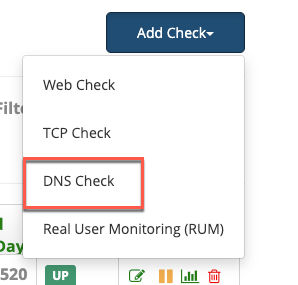
2. Name
Next, give your check a unique name that will help you easily identify the check. For example, you could name it after the host or IP you are making the check for.

3. FQDN
Next, enter the FQDN you want to query for in the FQDN field.

4. Name Server
Add the name server you would like to query against in the Name Server field.
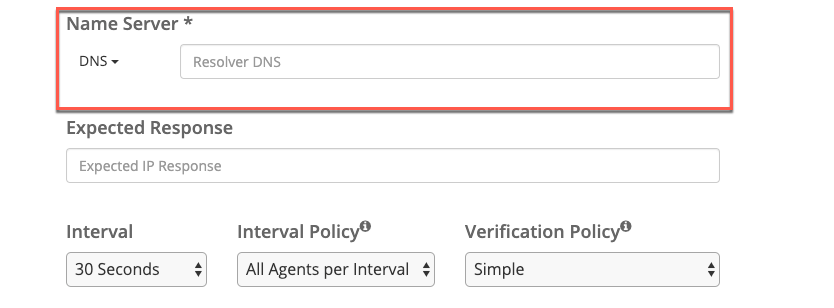
5. Expected Response (optional)
Add the expected DNS response the DNS server should provide.
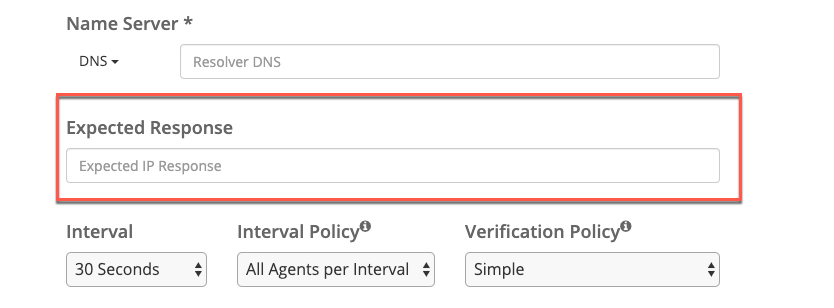
6. Interval
Next, choose how often you want our monitoring nodes to check the status of your endpoint. Keep in mind, if you choose a shorter time, the more costly it will be. Also, consider that the more monitoring locations you choose will reduce the interval time if you choose the “Once per Site” or “Once per Region” interval policies.
Since we are running checks from multiple locations at each interval, the interval period is actually reduced to Interval/Monitoring Locations and can be as short as a fraction of a second.
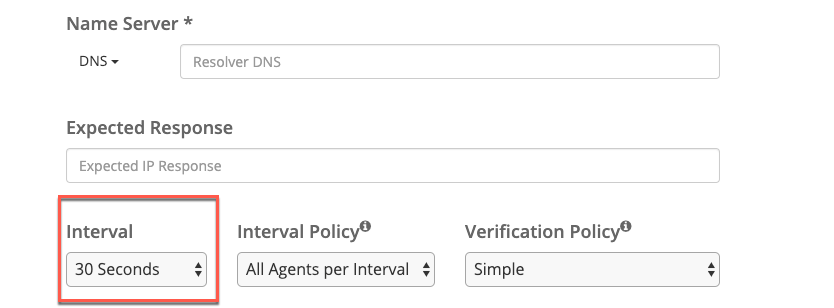
7. Interval Policy
Choose how many locations are checked at each check interval.
All Agents Per Interval - All selected agents will initiate a check simultaneously at each check interval. For example, if you have 5 selected agents with a 30-second interval, a check will run from all 5 agents every 30 seconds.
One Agent Per Interval - A check will run from an individual agent at each check interval. For example, if you have 5 agents selected with a 30-second interval, one check will be run from one of the selected agents every 30 seconds.
One Agent Per Region Per Interval - A check will be run from one agent in all selected Regions per interval. For example, if you have 2 agents selected in all 6 regions with a 30-second interval, a check will be run from one agent in each selected region every 30 seconds.
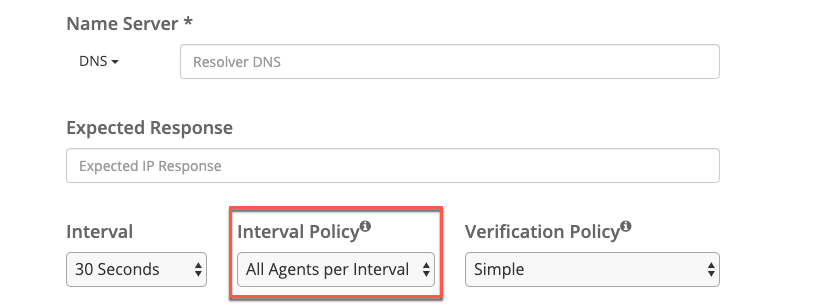
8. Verification Policy
Next, select a policy that will determine how agents will decide if a check is UP or Down.
Simple - When a monitoring node detects an endpoint as down, we will also check from a nearby location to verify. If the verification confirms the original report we will consider the check as Down.
Majority - Determine whether the check is UP or DOWN based on what the majority of the selected agents are reporting. Note: We recommend that you select at least 3 agents if you chose this option.
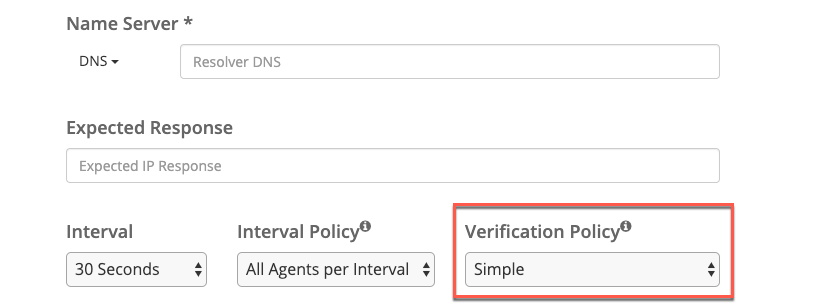
9. Select Agents
Select monitoring agents by clicking on "View or Select Monitor Agents".
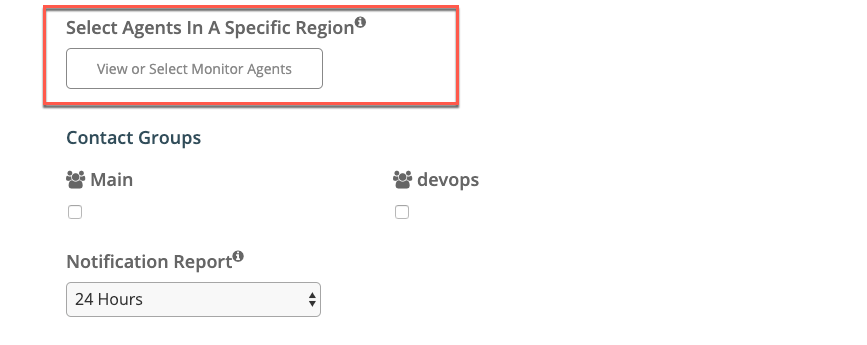
Then check the box next to the agent you would like to monitor your site. You can select an entire region by checking the box next to that region.

10. Contact Groups
These are pre-configured groups of contacts that you can define within the Contacts Groups. All users in the chosen group(s) will be notified of UP/DOWN status changes, but only when they are scheduled to receive alerts.
If you would like to receive a notification when the status of a check changes you can select from one of the "Contact Groups" you have created. If you do not have a contact group and would like to create one please follow the following tutorials.
Here is the tutorial for creating a Contact Group.
Here is a tutorial for creating a Contact.

11. Notification Report
The notification report allows you to define the amount of time you would like the notification report to be available after an event or check the status change has taken place.
Whenever a check is detected as DOWN, we will send an email with a notification report attached displaying information regarding the outage.


